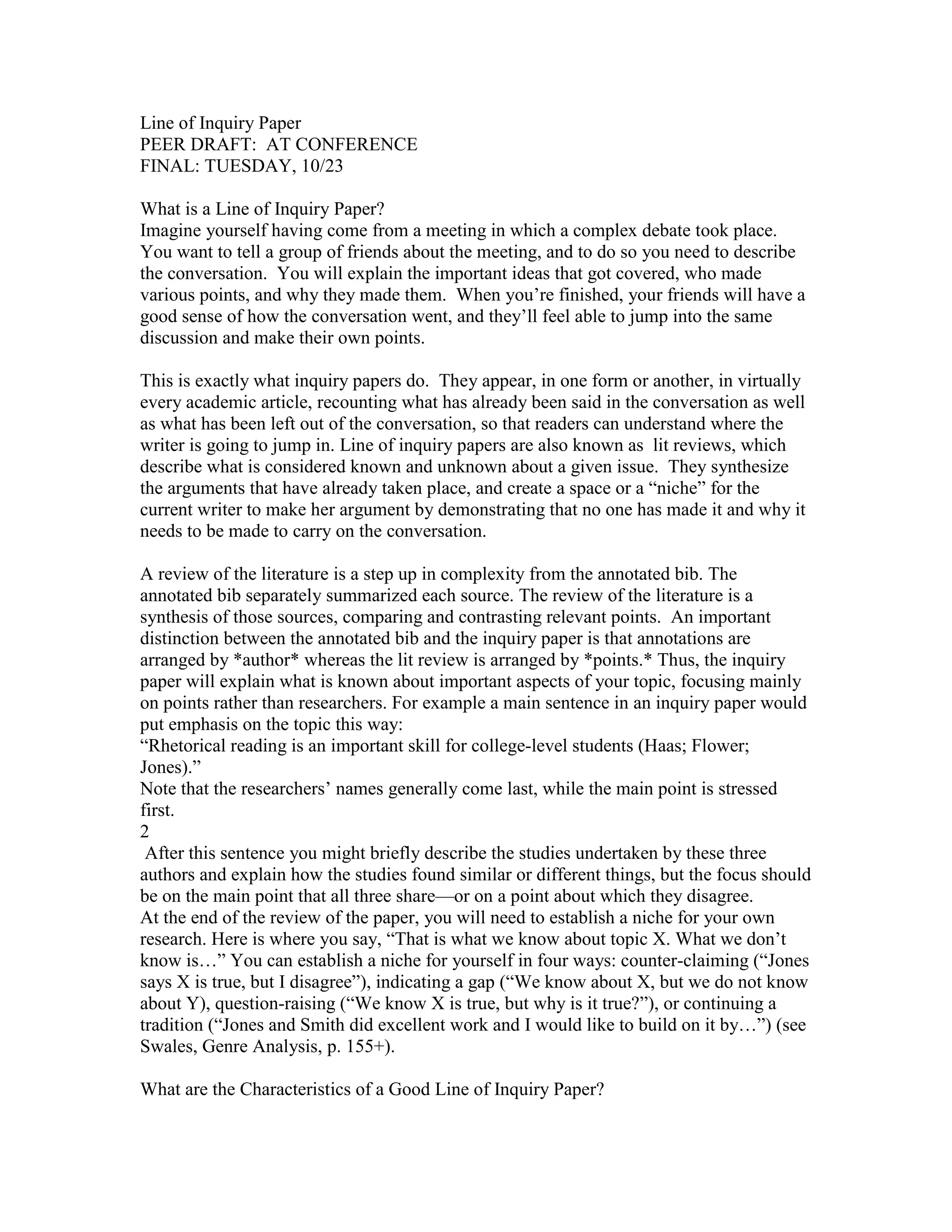The document provides guidance on writing a line of inquiry paper. It explains that a line of inquiry paper summarizes the key points of a debate or discussion on a topic to bring readers up to speed. It synthesizes the existing arguments and identifies a niche or new argument for the writer to add to further the conversation. The document recommends that writers of a line of inquiry paper establish the context, summarize what is known from previous research, and identify gaps or questions to position their own research. It also provides tips for writing a good line of inquiry paper such as relating it to the thesis, only including relevant sources, and grouping sources by common ideas.

